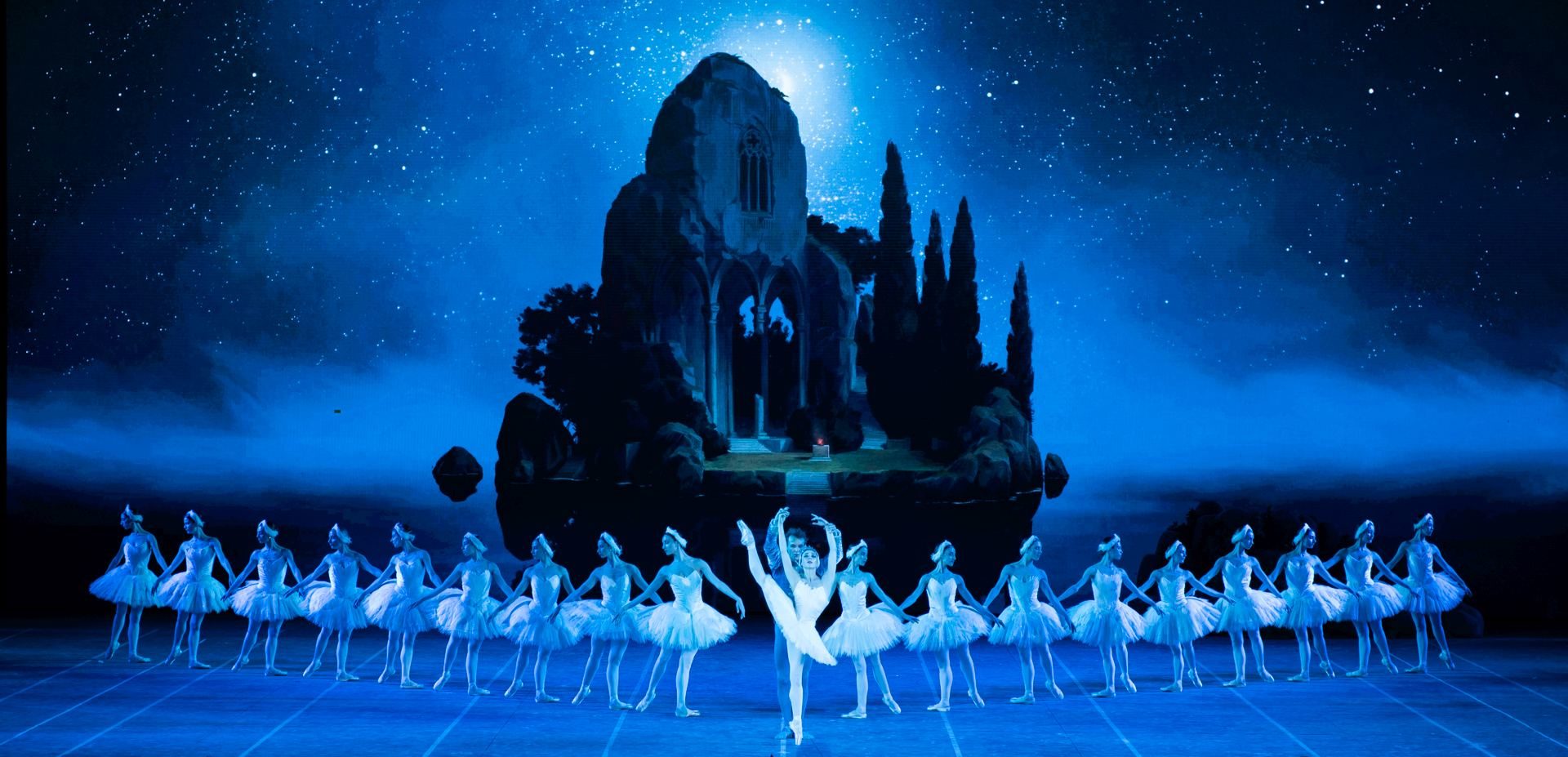“Legends – Homage to Richard Strauss”
Semperoper Ballet
Semperoper
Dresden, Germany
July 11, 2014
by Ilona Landgraf
Copyright © 2014 by Ilona Landgraf
 Richard Strauss (1864 – 1949), the German composer and conductor, would have celebrated his 150th birthday this year. He was closely connected to Dresden, where nine of his fifteen operas had their world premieres. Thus it isn’t surprising that the Semperoper Dresden is celebrating this jubilee extensively with an array of operas, concerts, song recitals and the ballet evening “Legends – Homage to Richard Strauss”. The ballet program, based on Strauss music, includes two world premieres. For the first time, Alexei Ratmansky has created new choreography in Germany – the ensemble piece “Tanzsuite”, first on the program. The other premiere, “The Legend of Joseph”, is by Stijn Celis, a choreographer already familiar with the Semperoper’s dancers.
Richard Strauss (1864 – 1949), the German composer and conductor, would have celebrated his 150th birthday this year. He was closely connected to Dresden, where nine of his fifteen operas had their world premieres. Thus it isn’t surprising that the Semperoper Dresden is celebrating this jubilee extensively with an array of operas, concerts, song recitals and the ballet evening “Legends – Homage to Richard Strauss”. The ballet program, based on Strauss music, includes two world premieres. For the first time, Alexei Ratmansky has created new choreography in Germany – the ensemble piece “Tanzsuite”, first on the program. The other premiere, “The Legend of Joseph”, is by Stijn Celis, a choreographer already familiar with the Semperoper’s dancers.
Richard Strauss and Alexei Ratmansky seem to share a trait: both are passionate about the past, about evoking history and reconfiguring it as contemporary art. One of Strauss’ historical sources of inspiration was the French rococo period. Its lightness and esprit found expression in Strauss’ creation “Ballroom and Theater Dances in the Style of Louis XV”, better known as the “Tanzsuite”, which premiered 1923 in Vienna. Strauss’ composition drew on a selection of François Couperin’s ‘Pièces de Clavecin’, pieces for the piano from the years 1713 – 1730, which Strauss adapted, rearranged and scored for small orchestra. The style of 20th century’s late romantic music was subtly woven into the rococo miniatures, which evoked a French court of the 18th century. In charge of the choreography for Vienna was Heinrich Kröller (1880 – 1930), a German ballet master and choreographer who worked first for Munich’s ‘Royal Court and National Theater’ and later for the Vienna State Opera. Playing with court dances and including mythological figures, Kröller enchanted his Viennese post-court audience with royal grandeur. (more…)
 William Forsythe’s “Impressing the Czar” is the Semperoper Ballet’s second premiere this season. It testifies to the company’s strong ties with the choreographer, reinforcing the relationship. After the closure of Forsythe’s own company, Ballet Frankfurt, in 2004, where “Impressing the Czar” had received its premiere in January 1988, only the Royal Ballet of Flanders and now the Semperoper Ballet are allowed to perform it. In the program notes Forsythe emphasized his intense, confidence-building collaboration with the Dresden company. At the moment it is the only one dancing his earlier works in a true and faithful manner.
William Forsythe’s “Impressing the Czar” is the Semperoper Ballet’s second premiere this season. It testifies to the company’s strong ties with the choreographer, reinforcing the relationship. After the closure of Forsythe’s own company, Ballet Frankfurt, in 2004, where “Impressing the Czar” had received its premiere in January 1988, only the Royal Ballet of Flanders and now the Semperoper Ballet are allowed to perform it. In the program notes Forsythe emphasized his intense, confidence-building collaboration with the Dresden company. At the moment it is the only one dancing his earlier works in a true and faithful manner.






